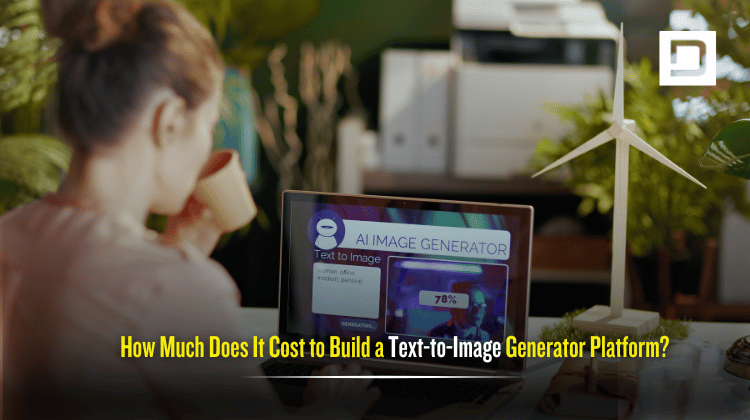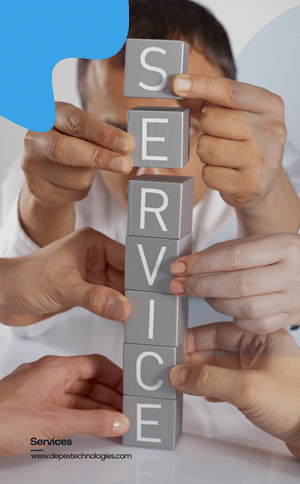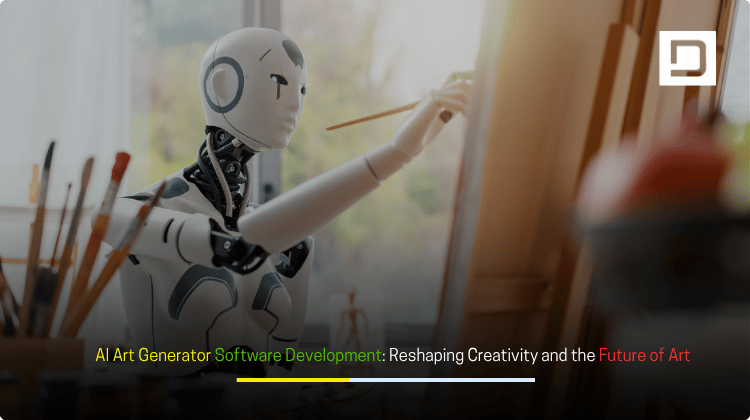AI Art Generator Software Development: Reshaping Creativity and the Future of Art
In today’s digital landscape, the intersection of technology and creativity has sparked a revolution that is changing how we produce, experience, and even understand art. At the forefront of this transformation is AI Art Generator Software Development — a rapidly growing field that empowers artists, businesses, and creative professionals to break traditional boundaries and unlock new possibilities in visual storytelling.
As the demand for unique, personalized, and instantly accessible art explodes across the globe, businesses and creators are seeking innovative solutions that combine the power of artificial intelligence with intuitive, scalable software. In this comprehensive guide, we will explore how AI Art Generator Software Development is reshaping creativity, the critical technologies involved, its real-world applications, ethical considerations, and why partnering with an expert like Depex Technologies can future-proof your journey in the world of AI-driven art.
The phrase AI Art Generator Software Development once sounded like something straight out of science fiction. Fast-forward to 2025, and these tools have gone mainstream — disrupting creative industries, democratizing art creation, and enabling businesses to stand out with never-seen-before visuals. AI-powered art generators are no longer limited to experimental tech labs; they are the backbone of innovative design studios, marketing agencies, digital product companies, and individual creators worldwide.
The future of art is not just about brush strokes and palettes; it’s about neural networks, deep learning, and software ecosystems that can visualize ideas at the speed of thought. If you’re considering building or integrating AI Art Generator Software, you’re joining a movement that is reshaping creativity itself. And with search engines now favoring AI-first content, having software that can create high-quality, SEO-optimized images is more vital than ever.
What Is AI Art Generator Software Development?
AI Art Generator Software Development is the process of designing, building, and deploying software solutions that use artificial intelligence — especially machine learning and deep learning models — to generate, enhance, or transform visual art. These software platforms enable users to input prompts (text, images, sketches, or concepts), and, through complex AI algorithms, create artwork that is unique, relevant, and often indistinguishable from human-made art.
But developing a high-quality AI art generator isn’t just about coding a neural network. It’s an end-to-end process that involves:
- Understanding creative workflows
- Designing intuitive user interfaces
- Integrating scalable AI models
- Ensuring high-performance image rendering
- Addressing legal and ethical concerns
- Providing robust backend infrastructure
As a result, AI art generator software can be tailored for a range of users — from professional artists and marketers to hobbyists, educators, and large enterprises seeking rapid, custom image creation.
The Evolution of AI in Art: From Pixels to Possibilities
AI’s journey in the creative space has been nothing short of remarkable. Let’s trace the evolution:
- Early Experimentation: The first attempts at computer-generated art date back to the 1960s, but these works were limited by technology and often required significant human intervention.
- Neural Networks and GANs: The real game-changer arrived with the advent of Generative Adversarial Networks (GANs) and Convolutional Neural Networks (CNNs). Suddenly, machines could “learn” from thousands of artworks and create images that were not just random, but contextually rich and aesthetically pleasing.
- Text-to-Image and Style Transfer: Today’s leading AI art generators, like DALL·E, Midjourney, and Stable Diffusion, can create stunning images from textual prompts, mix styles, and even animate concepts, all thanks to advances in natural language processing and diffusion models.
- Mainstream Adoption: What started as experimental research now powers major commercial applications: social media avatars, digital marketing creatives, NFT artwork, gaming environments, and much more.

AI Art Generator Software Development is thus not just a technical feat; it’s the next step in the ongoing dialogue between humans and technology, with software development firms like Depex Technologies bridging the gap.
Core Technologies Powering AI Art Generator Software
Building a best-in-class AI art generator requires a deep understanding of both software engineering and artificial intelligence. Here are the core technologies that drive these platforms:
1. Deep Learning & Neural Networks
At the heart of AI art generators are deep neural networks — complex algorithms modeled after the human brain. Generative Adversarial Networks (GANs) are particularly popular, consisting of two competing neural networks (generator and discriminator) that “learn” to produce increasingly convincing images.
2. Diffusion Models
Recent breakthroughs, such as Stable Diffusion, have made AI art generation more accessible and scalable. Diffusion models iteratively transform random noise into coherent images, guided by training data and user prompts, resulting in breathtakingly detailed and original artworks.
3. Natural Language Processing (NLP)
To convert user prompts into visual art, AI art generators rely on NLP. These models can understand context, interpret emotions, and translate abstract ideas from text into image features, making the creative process far more intuitive.

4. Cloud Computing & Edge AI
AI art generator software often leverages cloud infrastructure for heavy computations, ensuring fast rendering times and scalability. For latency-sensitive or privacy-focused applications, Edge AI allows some processing to occur directly on local devices.
5. API Integrations & Plugin Ecosystems
Modern AI art generators are rarely standalone tools. Through APIs and plugin architectures, these platforms can integrate with design suites (like Adobe Creative Cloud), social media platforms, and other enterprise systems, extending their reach and utility.
The Art of User Experience: Design Thinking in AI Art Generator Software
A successful AI art generator isn’t just about impressive outputs; it’s about how effortlessly users can harness the tool’s power. That’s where UX/UI design comes into play.
- Intuitive Interfaces: The best platforms offer clean, distraction-free workspaces where users can experiment with prompts, see previews in real-time, and iterate quickly.
- Customization and Control: Advanced users want fine-tuned control over style, color palettes, resolution, and output formats. Incorporating these options without overwhelming beginners is a UX challenge that only skilled teams can solve.
- Collaboration Features: Many creative processes are collaborative. AI art generators can enable shared projects, feedback cycles, and team libraries, transforming how creative teams work.
- Accessibility: Ensuring the tool is usable by people of all abilities — including screen reader support, color blindness modes, and multi-language support — widens the audience and boosts adoption.
By focusing on UX in AI Art Generator Software Development, you not only attract users but also turn them into long-term advocates of your platform.
Key Features of Modern AI Art Generator Software
When developing or investing in AI art generator software, it’s crucial to understand the features that drive value and competitive differentiation.
1. Prompt-Based Art Creation
Users can generate unique art pieces from simple text prompts, sketches, or reference images, making creativity accessible even for non-artists.
2. Style Transfer and Mixing
AI models can replicate or blend artistic styles — from Renaissance to Pop Art, anime to abstract — allowing for endless visual experimentation.
3. High-Resolution Output
For professional-grade applications (printing, digital marketing, NFTs), software must support exporting images in high resolutions without artifacts or loss of detail.
4. Batch Processing & Automation
Businesses and agencies need tools that can create multiple assets at once. Automation features — like batch image generation and scheduled rendering — streamline content pipelines.
5. Custom Model Training
Some advanced platforms allow users or organizations to train custom models using their own datasets, enabling brand-specific art styles or specialized content generation.
6. Safe and Ethical Content Filters
AI art tools should include safeguards against generating inappropriate, copyrighted, or harmful content. This is increasingly important for enterprise and educational users.
7. Real-Time Previews and Editing
Fast feedback loops, with real-time previews and interactive editing, enhance the creative experience and reduce iteration time.
8. Integration Capabilities
Seamless integration with popular creative, publishing, and marketing tools boosts workflow efficiency and ensures your AI art fits into existing ecosystems.
Real-World Applications of AI Art Generator Software
The versatility of AI art generators is staggering. Let’s look at some key applications that are already redefining industries:
Digital Marketing and Advertising
AI-generated visuals can help brands stand out in crowded digital spaces, personalize ads, and run rapid A/B tests with unlimited variations — all without hiring large design teams.
Social Media Content Creation
Influencers and agencies can use AI art generators to create unique, on-brand visuals for posts, stories, and profile pictures, keeping engagement high and content pipelines fresh.
NFT and Web3 Art
The NFT (Non-Fungible Token) boom has created a massive demand for original digital art. AI art generator software allows creators to mint, customize, and sell collections at scale, all while retaining ownership and provenance.
Game Development and Virtual Worlds
Game studios can rapidly prototype characters, environments, and assets, reducing costs and development cycles. With custom model training, AI can even generate unique visual styles for indie games.
Print on Demand (POD) and E-Commerce
AI art generators power design tools for apparel, accessories, and home décor, enabling customers to personalize products on the fly and preview them before purchase.

Education and Creative Learning
Teachers and students can use AI art tools to explore creativity, learn about art history, and visualize complex concepts, making education more interactive and engaging.
Publishing and Media
From book covers to magazine illustrations, publishers can leverage AI art generators to source bespoke imagery, reduce lead times, and cut production costs.
AI Art Generator Software Development Workflow: From Idea to Launch
Creating a robust and scalable AI art generator involves a multidisciplinary process. Here’s a high-level overview of how expert teams like Depex Technologies bring your vision to life:
Discovery and Ideation
Every great software product begins with understanding the market, user needs, and business goals. Workshops, competitor analysis, and technical feasibility studies set the foundation for a successful project.
UX/UI Design and Prototyping
Designers create wireframes, mockups, and interactive prototypes that map out user journeys, interfaces, and workflows. Feedback loops ensure the tool feels intuitive for all users.
Model Selection and Training
AI engineers select or develop suitable deep learning models (GANs, diffusion models, transformers, etc.), train them on curated datasets, and fine-tune for quality, speed, and safety.
Backend and Infrastructure
Scalable cloud architecture is set up to handle user requests, store images, and manage computational workloads. Security, compliance, and cost optimization are prioritized from the start.
Frontend Development
Developers build responsive web or mobile interfaces, integrating AI capabilities via APIs and ensuring cross-device compatibility.
Integration and API Development
Connecting the AI art generator with other tools, platforms, and third-party services enhances functionality and user reach.
Testing and Quality Assurance
Rigorous testing — including usability, performance, and security checks — ensures the platform works flawlessly in real-world scenarios.
Deployment, Monitoring, and Support
Once launched, ongoing monitoring, updates, and support keep the software secure, reliable, and ahead of the curve. Feedback from early users is incorporated to guide future improvements.
Challenges and Considerations in AI Art Generator Software Development
While the opportunities are vast, developing AI art generators also comes with unique challenges:
Data and Copyright
Training AI models requires large datasets. Ensuring this data is ethically sourced, copyright-compliant, and diverse is critical to avoiding legal and reputational risks.
Bias and Fairness
AI can unintentionally perpetuate biases present in its training data. Ongoing auditing, diverse datasets, and transparent algorithms are necessary to mitigate these risks.
Content Moderation
Preventing the generation of harmful, explicit, or culturally insensitive images is essential, especially in public or educational applications. Implementing automated content filters is standard practice.
Computational Cost
AI models, especially those generating high-res images, require significant computational power. Optimizing for performance and cost-effectiveness (using cloud GPUs, model compression, etc.) is a key development priority.
User Privacy
When users upload personal images or data, robust security and privacy protections must be in place, including encryption, secure storage, and clear privacy policies.
Continuous Improvement
The field of AI is evolving rapidly. Regular model updates, feature enhancements, and support for new creative trends ensure your software remains relevant and competitive.
The Business Impact: Why Invest in AI Art Generator Software Development?
Businesses across sectors are realizing that investing in AI art generator software isn’t just about technology — it’s a strategic move that delivers:

Speed and Scalability
AI-generated art can be produced in seconds, empowering brands to scale content creation and respond instantly to market trends.
Cost Savings
By automating creative processes, businesses can reduce dependence on large design teams and agencies, saving both time and money.
Competitive Differentiation
Custom AI art generators enable brands to offer unique, personalized visuals that stand out from competitors, boosting engagement and loyalty.
Enhanced User Engagement
Interactive, AI-powered tools delight users, encourage exploration, and drive repeat usage — whether on websites, apps, or e-commerce platforms.
Data-Driven Creativity
With analytics, A/B testing, and feedback loops, businesses can continually refine their creative outputs for maximum impact.
The Future of Creativity: How AI Art Generator Software Is Shaping What’s Next
As artificial intelligence evolves, so too does the landscape of creativity. Here are some future trends in AI Art Generator Software Development:
Hyper-Personalization
AI will increasingly generate art that is tailored to individual preferences, demographics, and even real-time emotional cues, opening new doors for marketing, entertainment, and therapy.
Multimodal Creativity
The next generation of AI art tools will blend visuals, music, text, and even 3D content — enabling holistic, multimedia experiences driven by a single prompt.
Real-Time Collaboration
Cloud-based AI art generators will support live, multiplayer creative sessions, making remote collaboration as seamless as working in the same studio.
Democratization of Art
As AI art tools become more accessible and affordable, creativity will no longer be limited by skill, geography, or resources — empowering anyone to become an artist.
Ethical and Responsible AI
Greater transparency, explainability, and ethical frameworks will ensure that AI-generated art is safe, respectful, and beneficial to society as a whole.
Why Choose Depex Technologies for Your AI Art Generator Software Development?
Developing a market-leading AI art generator requires more than technical expertise — it demands a visionary approach, deep industry knowledge, and a commitment to quality. Here’s why Depex Technologies is the ideal partner for your AI Art Generator Software Development journey:
Proven AI and Software Engineering Expertise
With years of experience building AI-powered platforms, our team combines world-class data scientists, developers, and designers who understand both the art and science of software innovation.
End-to-End Solution Delivery
From ideation and design to deployment and support, Depex Technologies offers a full spectrum of services, ensuring your project is delivered on time, on budget, and to the highest standards.
Customization and Scalability
Whether you’re building a niche creative tool or a large-scale enterprise platform, we architect solutions that scale with your business and evolve with your needs.
Focus on User Experience
We believe that the most powerful technology is also the most usable. Our UX/UI experts design interfaces that delight users and drive engagement.
Ethical and Responsible AI
We prioritize data ethics, privacy, and content safety in every project, giving you peace of mind and protecting your brand.
Seamless Integration
Our solutions are built to integrate with your existing workflows, platforms, and tools, maximizing value and minimizing disruption.
Ongoing Support and Innovation
The world of AI is fast-moving. We provide continuous updates, monitoring, and enhancement, ensuring your software always stays ahead of the curve.
Conclusion: Unlock the Future of Art with Depex Technologies
AI Art Generator Software Development is not just a trend — it’s a technological and cultural shift that is redefining creativity, design, and digital engagement. Whether you’re an entrepreneur, an artist, or a business leader, investing in AI-powered art tools opens new realms of possibility, accelerates your creative pipeline, and gives you a powerful edge in a competitive market.

At Depex Technologies, we are passionate about empowering our clients to harness the full potential of AI in art. Our team is ready to help you conceptualize, develop, and scale cutting-edge AI art generator software that delights users, transforms your business, and shapes the future of digital creativity.
Ready to reshape creativity and lead the future of art?
Partner with Depex Technologies for your AI Art Generator Software Development project today. Let’s create something extraordinary together.






